Corn silage produces more energy per acre compared to other crops. Therefore, corn silage serves as a high-energy forage for dairy cows. As a result, it can extend the harvest period for the entire corn area and provide an opportunity to save stressed or damaged corn fields. In addition, corn silage can efficiently recycle plant nutrients, especially large amounts of N and K.
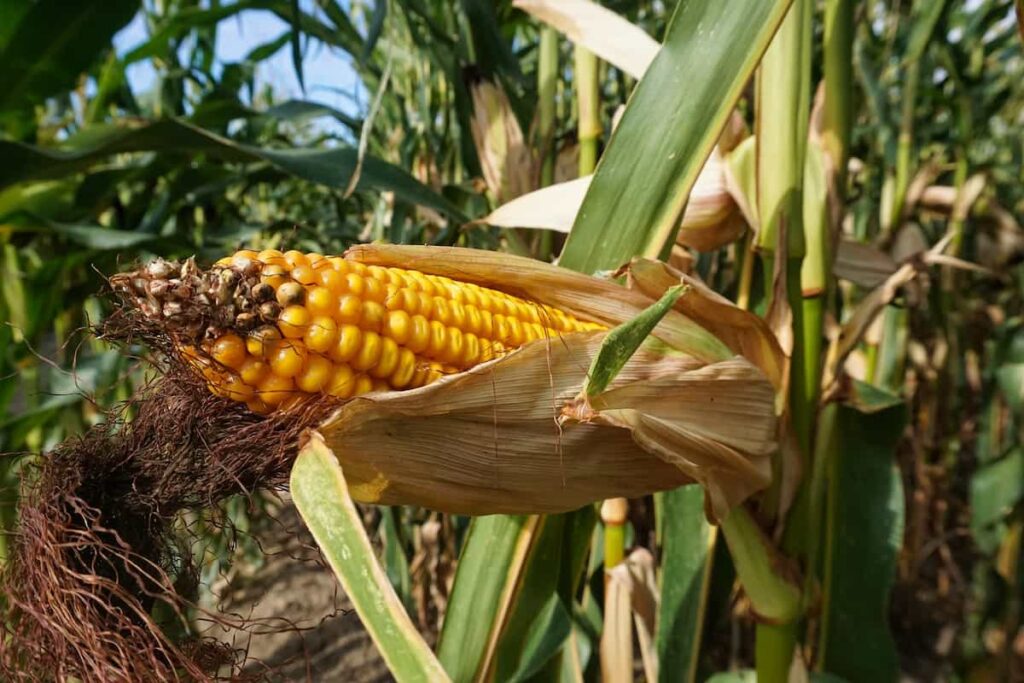
How to make Corn silage
Corn silage production plan
A detailed plan for corn silage production is essential to an efficient cropping system. Crop planning should be based on forage dry matter requirements considering harvest, storage, feed losses, and agronomic factors such as field selection, hybrid selection, rotation, fertility, and weed control programs. A primary consideration for corn silage production is whether corn silage fields will be identified during the growing season or planning.
Growers identify fields during the growing season by selecting late-planted fields for some reason. It can be effective when stresses such as drought, insects, or disease are frequently encountered. It allows farmers to obtain higher dry matter and energy yields from fields with limited high grain yield potential. However, selecting fields for silage harvesting during the season limits the opportunity to take advantage of management practices that can potentially increase silage yield and quality.
Production methods to make corn silage
Corn silage can also contribute to soil erosion and the potential to increase soil productivity when soil conservation practices are not part of the production system. Corn silage consists of whole corn plants. Silage can also be made from fodder and small grain crops. Corn silage production leaves very little crop residue on the ground. It can increase erosion and reduce organic matter levels, increasing nitrate leaching potential. As a result, the soil will become less productive and more susceptible to soil compaction.
To help avoid this, consider using winter rye or ryegrass cover crops and reducing or eliminating tillage. This system can help build soil quality over time, combined with fertilizer application and avoiding soil compaction. Some silage producers have found that they grow corn silage continuously using this system. Silage ensures the availability of fodder for livestock during the dry season. Silage also helps improve animal digestion and sustain milk production throughout the year.
Corn silage is a digestible and edible forage with consistent quality, high yield, and higher energy than other forages. Corn silage can be stored for about two years once produced because of the increased shelf life. It is more nutritious than other feed options and improves farm productivity by significantly reducing production costs. Additional inoculants containing lactic acid-producing bacteria improve the fermentation process, retain valuable nutrients, reduce spoilage, increase milk yield and improve milk quality by increasing milk fat percentage and protein.
In case you missed it: Role of 5G Technology in Agriculture: How will it Change Future Farming
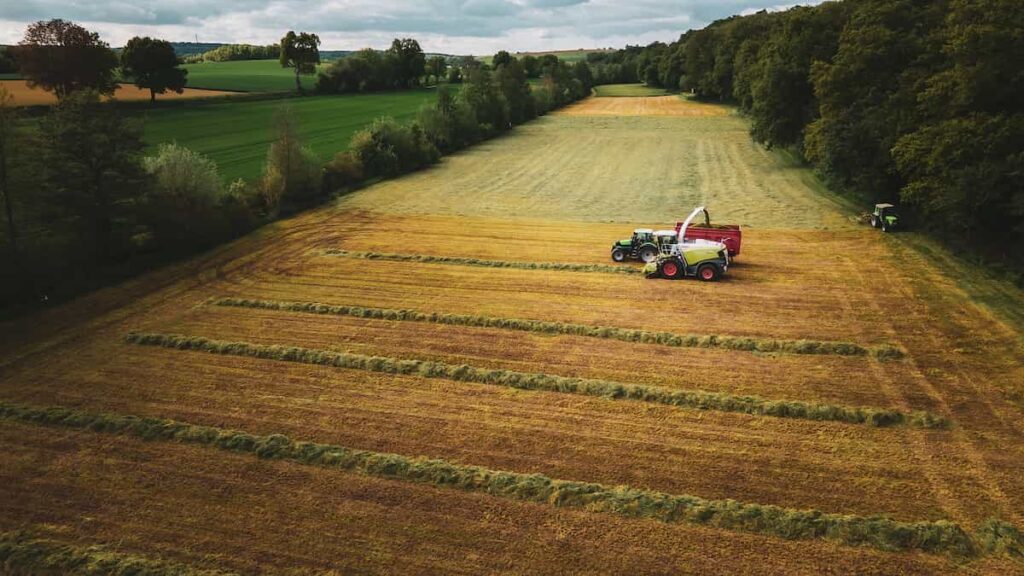
Corn silage for weed and pest management
Weed and pest control strategies in corn for silage are similar to those in corn for grain. Silage production is more sensitive than grain production to pests or other factors that reduce stand because corn plants have difficulty fully compensating for missing plants. Poor weed control in corn can have several negative effects on silage. Where there is poor weed control, both forage yield and quality can be reduced, and many weed seeds can be incorporated into the compost.
Corn hybrid selection for silage production
Corn hybrids selected for silage production should have a high yield of quality silage before frost. The productivity of hybrids can be obtained from silage performance tests. Select hybrids with a relative maturity (RM) of 10 days longer than full-season grain hybrids for your region to maximize corn silage yield potential.
These hybrids often have a yield advantage of 2 to 4 tons per acre over standard maturity hybrids. Later maturing hybrids are unsuitable where the crop may be harvested for grain, where early silage is desired, or where wet soils can interfere with harvest. The maturity range of hybrid varieties selected for a particular farm must be carefully considered.
What type of corn is used for producing silage?
Dual-purpose, leafy, and BMR hybrids are the three main types of corn grown for silage on dairies today. Dual-purpose hybrids were designed for grain or high-quality corn silage production. As a result, dual-purpose hybrids generally have high grain yield potential and moderate fiber digestibility.
Can you feed corn silage to goats?
Silage production can be an economical source of nutrients for sheep and goats, especially on large farms where feeding can be mechanized. Corn silage consists of whole corn plants. Silage can also be made from fodder and small grain crops.
In case you missed it: Goat Farming Loan in India: How to Get, Interest Rate, Documents for Banks, Mudra, and NABARD
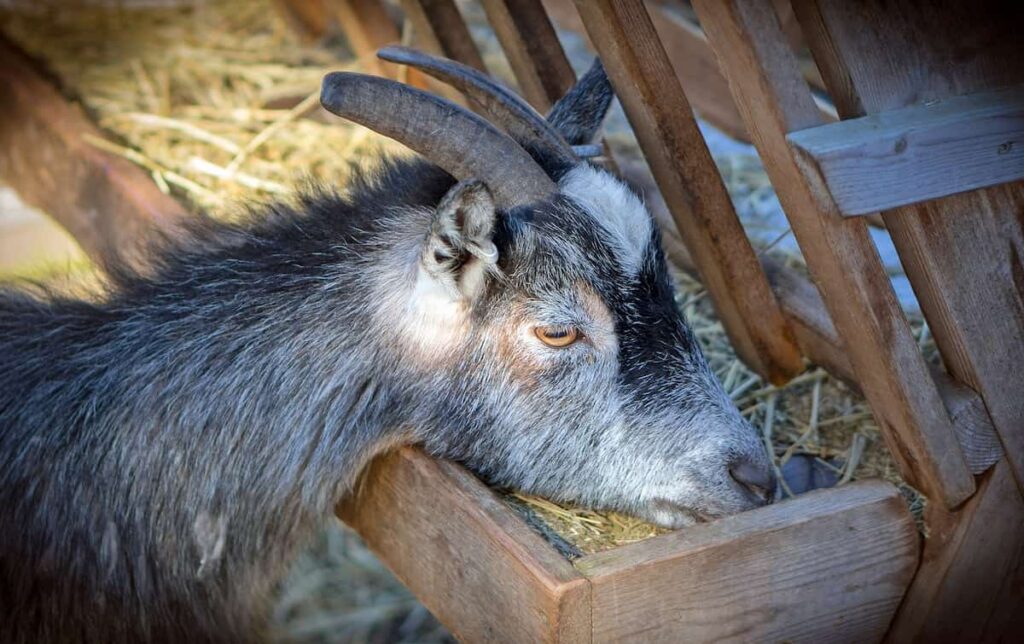
How long does corn silage take to grow?
Silage harvest typically begins at about 50% kernel milk 42 to 47 days after silking, so silking should be harvested August 15-20 to mature before normal frost dates. But remember that the timing of silage harvesting is dependent on achieving adequate moisture for the storage structure.
Corn silage for sheep
Corn silage has been used in sheep feed formulations for decades. It is best to contribute energy (TDN or calories) to the diet for a ewe. Large herds, 200 head or more, often use corn silage in TMR rations fed into fence line feeding systems. Corn silage is a fermented feedstuff that provides great flexibility in ewe diet formulations during pregnancy and lactation. It is considered a very economical forage source for ruminant diets. Corn silage has been used in sheep feed formulations for decades.
It is best to contribute energy (TDN or calories) to the diet for a ewe. Large herds, 200 head or more, often use corn silage in TMR rations fed into fence line feeding systems. In these feeding systems, corn silage is targeted to provide 50% forage (fed basis). It is combined with other types of forage, additional energy, or protein feed sources to meet the recommended nutritional requirements of the animals.
Corn silage has lower levels of protein, minerals, and vitamins when compared to higher-quality forages, such as alfalfa. Due to limitations in overall nutrient composition, corn silage is often combined with high-quality forage to meet nutrient requirements. Using corn silage as a whole forage source or as a compound is expected to provide high palatability and, as the basis of sheep, diets formulated to achieve target levels of animal performance.
Key points to improve corn silage management
- Ensure proper silage fermentation 3 weeks after ensiling.
- Avoid crusty, moldy, or spoiled silage from piles; Bags reduce these potential risk factors. Introduce silage gradually.
- If possible, mix with cattle feed, then sheep diets.
- Mix rations immediately before feeding.
- Never feed more corn silage than can be eaten per day. Instead, use a mixture of corn silage with complimentary forage.
- Adequate daily feed is required to keep corn silage fresh; oxygen is limited. About 2 inches daily in upright silos, bags, and piles, 1-foot minimum. Generally, recommend at least 200 ewes or equivalent when feeding sheep and cattle.
In case you missed it: How to Make Goat Manure Compost: A Step-by-Step Guide to Using in Your Garden/Farm
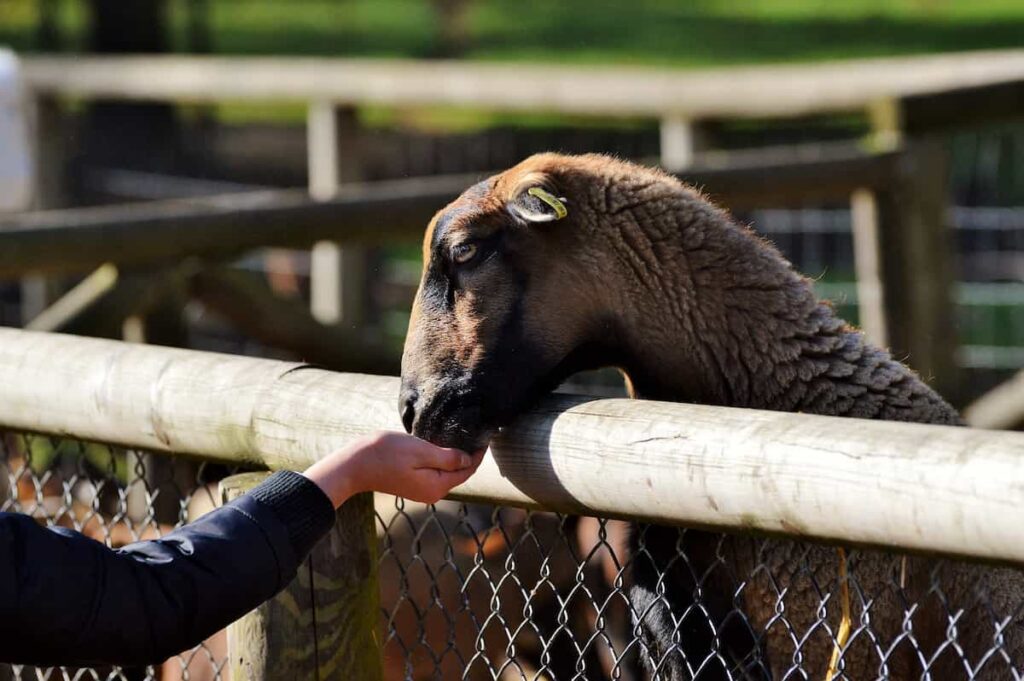
Corn silage for cows and cattle
- Corn silage (CS) is a preferred and frequently used forage in dairy cow nutrition, mainly due to its high DM production, high DM content at one harvest, high NEL concentration, and high milk yield. Due to its ability to retain good properties.
- The primary objective of making corn silage is to preserve as much of the corn plant’s nutrients as possible, produce a feed acceptable to the cow, and minimize any risks associated with feeding the silage.
- Corn silage is mainly used to feed all dairy cattle on the farm: growing animals, dry cows, and lactating cows. It contains protein, minerals, and sometimes the energy to meet the animal’s nutritional needs. Although it is occasionally used as the sole forage for dairy cattle, it is usually fed as a complimentary forage, such as alfalfa, which is high in crude protein but low in energy.
- Corn silage feeding strategies vary based on animal age, production level, body condition, and other forages being fed if any. Because of the high grain content, corn silage feeding to high-producing cow’s strategy differs from other forages.
- Corn silage is an excellent dry cow forage because it is palatable and can be fed in limited quantities or mixed with low-energy forage. However, the corn silage fed to dry cows and heifers should be limited due to its high energy content. High-yielding dairy cows require high-starch corn silage, while low-yielding dairy cattle, dairy replacement cows, or dry cows require low-energy corn silage.
In case you missed it: Top and Highest Milk Producing Cattle/Cow Breeds in India: Best Guide for Beginners
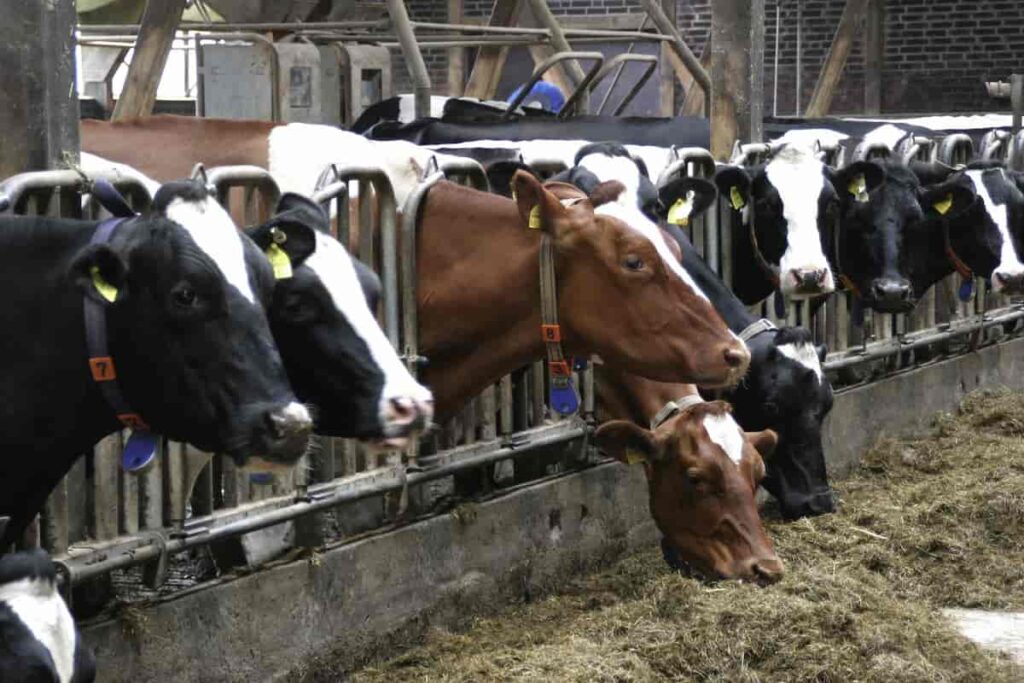
The process of making corn silage in agriculture
Corn silage making is one of a dairy farm’s most labor-intensive and time-consuming operations. In addition, it takes place over a short period and represents the basis of future feed for the cows until the following year. Therefore, every effort must be made to harvest, store, and provide high-quality feed.
Step 1: Harvesting corn for silage
Corn silage that has been properly prepared should be green/yellow and have a mild, pleasant vinegary smell. If it is a dark brown color or has another odor like a fruity, burnt smell, improper fermentation, or overheating has occurred. Understanding the fermentation process can help explain some of the problems in silage production.
Step 2: Harvest at the right moisture content
Fermentation or pickling is done by bacteria that convert some of the sugars in the greens into lactic acid. These bacteria require the right conditions to thrive and carry out positive fermentation. One of these conditions is humidity. Corn silage should be fermented at 35% dry matter or 65% moisture to facilitate packing and promote the growth of desirable bacteria. When monitoring corn fields for silage, a rule of thumb is to consider a drying rate of 0.5% per day.
Fermentation When a corn plant is cut and placed in some storage facility, the cells of the corn plant are still alive. Microorganisms in the respiration and silage of these plant cells produce carbon dioxide and heat. It is called aerobic respiration because oxygen is used. As carbon dioxide levels rise and oxygen levels fall, this respiration slows to a halt, and anaerobic (without oxygen) fermentation begins.
In this process, beneficial bacteria primarily use soluble carbohydrates in the cells to produce lactic acid. Lactic acid causes a drop in pH. Fermentation will continue until enough lactic acid is produced to drop the pH to about 4.2, at which point all bacterial activity ceases. It usually occurs within three weeks after filling the silo. If low levels of lactic acid build up, butyric acid, a foul-smelling acid, is produced, and silage spoils.
Step 3: Harvest at the correct stage
Appropriate harvest time is one of the most important factors affecting the quality of maize production. In addition, the stage of corn maturity will affect the quality of the corn silage because of the nutrient and moisture content of the plants.
Step 4: Chop length and kernel processing
Removing as much oxygen as possible from the forage fed is important to promote good fermentation. To accomplish this, the fodder is packed and compacted. The theoretical length of cut or TLC for processed corn silage is 3/4 inch; If the forage is not processed, the TLC should be 1/4 to ½ inches.
If the chop length is too thick, it becomes difficult to pack and can cause spoilage and non-fermentation problems. Kernel processing unlocks the energetic potential of the starch in the corn kernel because the protective layer of the kernel is damaged, exposing the starch to microbial fermentation in the rumen. Processed corn silage should not contain whole kernels and no visible cob pieces.
Step 5: Silage storage
After the first two steps, the next step is to seal the compressed hay with plastic to keep out oxygen. Mounds of silage are covered with large sheets of polyethylene (plastic) and weighted (usually with old tires) to ensure maximum compression. Bales, on the other hand, are covered with plastic wrap. In cases where silage has to be stored in a large pit, tractors and other machinery are usually driven over the grass pile until it is firm. If the silage is stored as bales, baling machines will be used to compress the hay.
Step 6: Preservation techniques
After the fermentation process is complete and all the oxygen is used up, lactic acid bacteria begin to grow. These are the bacteria needed to make silage. They play a key role in converting plant sugars to lactic acid, which causes the pH to drop (the mixture becomes more acidic). Once the pH is around 4-5, the breakdown of sugars stops, and the hay is preserved until the silage is opened and exposed to oxygen.
However, if the pH is not low enough, a variety of bacteria will begin to ferment the silage, producing by-products (such as ammonia) that are bad for cows and sheep. Thus, the latter situation needs to be avoided at all costs. Specializing in harvesting and baling processes, we work best with farmers by sending a team of experts who will come to your farm, harvest, and pack the crop in the best possible conditions.
In case you missed it: Donkey Farming in India: How to Start, Breeds, Milk, Cost, and Management
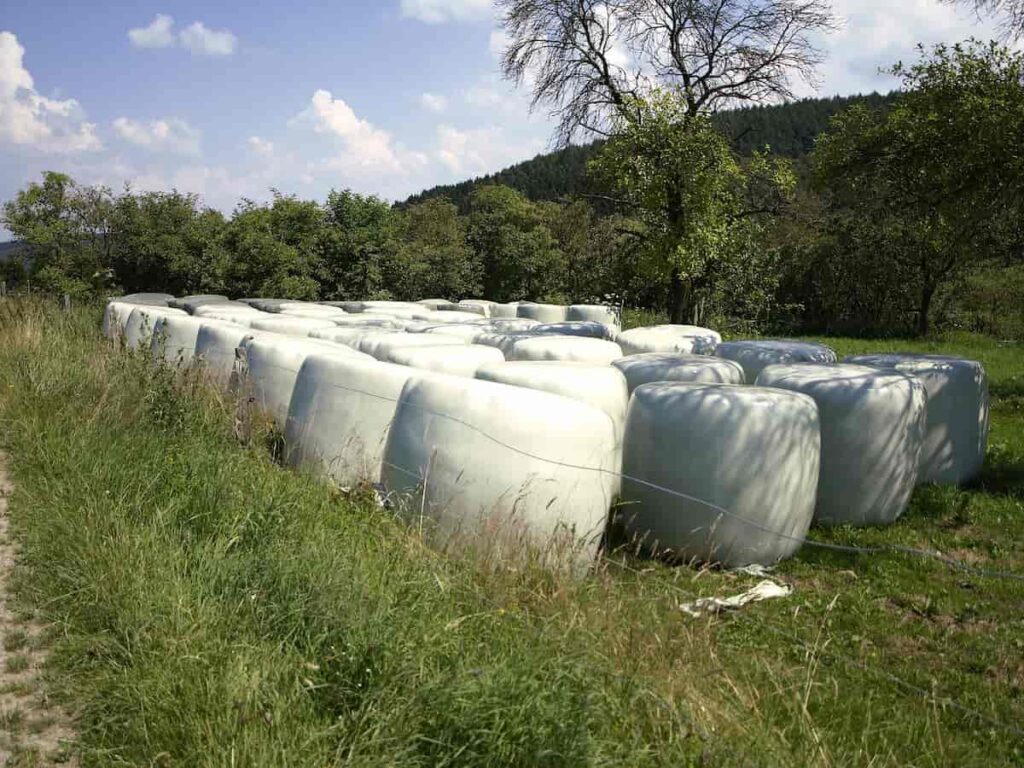
Estimating your corn silage yield
There are two ways to estimate tonnage, one based on plant height and the other based on estimated grain yield. Both use 30% dry matter as feed for harvest tonnage at harvest. When little or no grain is present, each foot of plant height yields one ton of silage per acre. When you measure the height of the plant, omit the tassel. A 5-foot earless plant from these yields 5 tons of silage per acre.
If your corn pollinates successfully, you can base silage tonnage on grain yield. For stressed corn with an estimated 100 bushels or less yield, you’ll get about one ton of silage for every five bushels of grain. When yields increase, you have more bushels of corn per ton of silage, 100 to 150 bushels per acre of land. Every 7.5 bushels of corn will produce yield about a ton of silage. You’ll see eight bushels of grain per ton of silage as yields continue to increase.
What do you need to make silage?
- High-yielding biomass corn hybrids with better digestibility and quality nutrients are required for silage production. In addition, silage management should result in a low oxygen concentration with an increase in carbon dioxide, creating an acidic environment to prevent microbial and fungal growth.
- Under most conditions, undesirable spoilage microorganisms will not grow. Good silage management is essential to prevent molds and mycotoxins. There are a wide variety of silo types and ensiling methods.
- A quality crop is ideal for making silage in the first place.
- For mass production, you will need proper farm machinery like tractors, silage baling machines, etc. In addition, you will need a silo or trench to store the finished silage.
- It is also important to understand that silage production quality can be significantly improved with the help of additives such as molasses, urea, salt, and formic acid.
Conclusion
Corn silage is most important for high-yielding herds and farms with trouble making or buying high-quality hay crop forage. Corn silage, with its relatively high energy content, is well suited for low-cost rations for fattening cattle. In addition, corn silage requires less labor per ton than other forage crops.
- Economical Aquaculture: A Guide to Low-Budget Fish Farming
- 15 Common Planting Errors That Can Doom Your Fruit Trees
- How to Make Houseplants Bushy: Effective Tips and Ideas
- Innovative Strategies for Boosting Coconut Pollination and Yield
- Pollination Strategies for Maximum Pumpkin Yield
- The Complete Guide to Chicken Fattening: Strategies for Maximum Growth
- Natural Solutions for Tulip Problems: 100% Effective Remedies for Leaf and Bulb-Related Issues
- Revolutionizing Citrus Preservation: Towards a Healthier, Greener Future
- Natural Solutions for Peony Leaf and Flower Problems: 100% Effective Remedies
- Maximizing Profits with Avocado Contract Farming in India: A Comprehensive Guide
- Natural Solutions for Hydrangea Problems: 100% Effective Remedies for Leaf and Flowers
- The Ultimate Guide to Choosing the Perfect Foliage Friend: Bringing Life Indoors
- From Sunlight to Sustainability: 15 Ways to Use Solar Technology in Agriculture
- The Ultimate Guide to Dong Tao Chicken: Exploring from History to Raising
- The Eco-Friendly Makeover: How to Convert Your Unused Swimming Pool into a Fish Pond
- Mastering the Art of Delaware Chicken Farming: Essentials for Healthy Backyard Flocks
- 20 Best Homemade Fertilizers for Money Plant: DIY Recipes and Application Methods
- How to Craft a Comprehensive Free-Range Chicken Farming Business Plan
- Brighten Your Flock: Raising Easter Egger Chickens for Beauty and Bounty
- How to Optimize Your Poultry Egg Farm Business Plan with These Strategies
- Subsidy for Spirulina Cultivation: How Indian Government Schemes Encouraging Spirulina Farmers
- Ultimate Guide to Raising Dominique Chickens: Breeding, Feeding, Egg-Production, and Care
- Mastering the Art of Raising Jersey Giant Chickens: Care, Feeding, and More
- Ultimate Guide to Raising Legbar Chickens: Breeding, Farming Practices, Diet, Egg-Production
- How to Raise Welsummer Chickens: A Comprehensive Guide for Beginners
- How to Protect Indoor Plants in Winter: A Comprehensive Guide
- Ultimate Guide to Grow Bag Gardening: Tips, Tricks, and Planting Ideas for Urban Gardeners
- Guide to Lotus Cultivation: How to Propagate, Plant, Grow, Care, Cost, and Profit
- Agriculture Drone Subsidy Scheme: Government Kisan Subsidy, License, and How to Apply Online
- Ultimate Guide to Raising Araucana Chickens: Breed Profile, Farming Economics, Diet, and Care
- Bringing Hydroponics to Classroom: Importance, Benefits of Learning for School Students
- Ultimate Guide to Raising Polish Chickens: Breed Profile, Farming Economics, Diet, and Care
- Ultimate Guide to Raising Australorp Chickens: Profile, Farming Economics, Egg Production, Diet, and Care
- Silkie Chicken Farming: Raising Practices, Varieties, Egg Production, Diet, and Care
- Sussex Chicken Farming: Raising Practices, Varieties, Egg Production, Diet and Care
- Homemade Feed Formulations for Livestock: Discover Cost-effective Starter to Finisher Feed Recipes